-
EXECUTIVE SUMMARY 17
-
MARKET INTRODUCTION 20
-
DEFINITION 20
-
SCOPE OF THE STUDY 20
-
RESEARCH OBJECTIVE 20
-
ARKET STRUCTURE 21
-
RESEARCH METHODOLOGY 22
-
OVERVIEW 22
-
DATA FLOW 24
- DATA MINING PROCESS 24
-
PURCHASED DATABASE: 25
-
SECONDARY SOURCES: 26
- SECONDARY RESEARCH DATA FLOW: 27
-
PRIMARY RESEARCH: 28
- PRIMARY RESEARCH DATA FLOW: 29
- PRIMARY RESEARCH: NUMBER OF INTERVIEWS CONDUCTED 30
- PRIMARY RESEARCH: REGIONAL COVERAGE 30
-
APPROACHES FOR MARKET SIZE ESTIMATION: 31
- CONSUMPTION & NET TRADE APPROACH 31
- REVENUE ANALYSIS APPROACH 31
-
DATA FORECASTING 32
- DATA FORECASTING TECHNIQUE 32
-
DATA MODELING 33
- MICROECONOMIC FACTOR ANALYSIS: 33
- DATA MODELING: 34
-
TEAMS AND ANALYST CONTRIBUTION 36
-
MARKET DYNAMICS 37
-
INTRODUCTION 37
-
DRIVERS 38
- INCREASING AWARENESS FOR HEALTH AND WELLNESS 38
- DRIVING SUSTAINABLE SHIFTS IN THE WATER BOTTLE MARKET 38
- INTEGRATION OF SMART TECHNOLOGIES INTO WATER BOTTLE DESIGN 39
-
RESTRAINTS 40
- INCREASING ENVIRONMENTAL CONCERNS AND PLASTIC DISCERNMENT 40
-
OPPORTUNITY 42
- INNOVATION IN SUSTAINABLE MATERIALS 42
-
CHALLENGES 42
- RECYCLING INFRASTRUCTURE AND CONSUMER BEHAVIOR 42
-
TRENDS 43
- INCREASING DEMAND FOR CUSTOMIZATION AND PERSONALIZATION 43
-
TECHNOLOGY TRENDS 44
- INTEGRATION OF BLUETOOTH CONNECTIVITY 44
- INCORPORATION OF UV-C LIGHT PURIFICATION 45
-
IMPACT ANALYSIS OF COVID-19 46
- IMPACT ON OVERALL CONSUMER GOODS INDUSTRY 47
- IMPACT ON THE SUPPLY CHAIN OF WATER BOTTLE 48
- IMPACT ON MARKET DEMAND OF WATER BOTTLE 51
- IMPACT ON PRICING OF WATER BOTTLE 52
-
MARKET FACTOR ANALYSIS 53
-
VALUE CHAIN ANALYSIS 53
- RAW MATERIALS 53
- MANUFACTURING / PRODUCTION/ PROCESSING 54
- PACKING 54
- DISTRIBUTION 55
- END-USER 55
-
SUPPLY CHAIN ANALYSIS 56
- PARTICIPANTS (AT DIFFERENT NODES) 56
- INTEGRATION LEVELS 57
- KEY ISSUES ADDRESSED (KEY SUCCESS FACTORS) 57
-
PORTER’S FIVE FORCES MODEL 58
- BARGAINING POWER OF SUPPLIERS 58
- BARGAINING POWER OF BUYERS 59
- THREAT OF NEW ENTRANTS 59
- THREAT OF SUBSTITUTES 60
- INTENSITY OF RIVALRY 60
-
GLOBAL WATER BOTTLES MARKET, BY MATERIAL TYPE 62
-
INTRODUCTION 62
-
PLASTIC 63
-
STAINLESS STEEL 63
-
GLASS 64
-
OTHERS 65
-
GLOBAL WATER BOTTLES MARKET, BY PRODUCT TYPE 66
-
INTRODUCTION 66
-
INSULATED 67
-
NON-INSULATED 68
-
FILTER WATER BOTTLE 68
-
INFUSER WATER BOTTLE 69
-
OTHERS 69
-
GLOBAL WATER BOTTLES MARKET, BY DISTRIBUTION CHANNEL 71
-
INTRODUCTION 71
-
OFFLINE 72
-
ONLINE 73
-
GLOBAL WATER BOTTLES MARKET, BY REGION 74
-
OVERVIEW 74
-
NORTH AMERICA 75
- US 78
- CANADA 79
- MEXICO 80
-
EUROPE 82
- GERMANY 85
- UK 86
- FRANCE 87
- SPAIN 88
- ITALY 89
- REST OF EUROPE 90
-
ASIA PACIFIC 91
- CHINA 94
- JAPAN 95
- INDIA 96
- AUSTRALIA 97
- SOUTH KOREA 98
- REST OF ASIA PACIFIC 99
-
ROW 100
- MIDDLE EAST 103
- AFRICA 104
- LATIN AMERICA 105
-
COMPETITIVE LANDSCAPE 107
-
INTRODUCTION 107
-
COMPETITION DASHBOARD 108
- PRODUCT PORTFOLIO 108
- REGIONAL PRESENCE 108
- STRATEGIC ALLIANCES 109
- INDUSTRY EXPERIENCES 109
-
MAJOR GROWTH STRATEGY IN THE GLOBAL WATER BOTTLE MARKET 109
-
KEY DEVELOPMENTS & GROWTH STRATEGIES 110
- NEW PRODUCT DEVELOPMENT 110
- MERGERS & ACQUISITIONS 111
- CONTRACTS & AGREEMENTS 111
- EXPANSIONS & INVESTMENTS 112
-
COMPANY PROFILES 113
-
SIGG SWITZERLAND BOTTLES AG 113
- COMPANY OVERVIEW 113
- PRODUCTS OFFERED 113
- SWOT ANALYSIS 116
- KEY STRATEGY 116
-
THERMOS L.L.C. 117
- COMPANY OVERVIEW 117
- PRODUCTS OFFERED 118
- SWOT ANALYSIS 119
- KEY STRATEGY 119
-
-
TUPPERWARE 120
- COMPANY OVERVIEW 120
- FINANCIAL OVERVIEW 121
- PRODUCTS OFFERED 122
- SWOT ANALYSIS 122
- KEY STRATEGY 123
-
CONTIGO BRANDS 124
- COMPANY OVERVIEW 124
- PRODUCTS OFFERED 124
- SWOT ANALYSIS 125
- KEY STRATEGY 126
-
S’WELL (A DIVISION OF LIFETIME BRANDS, INC). 127
- COMPANY OVERVIEW 127
- PRODUCTS OFFERED 128
- SWOT ANALYSIS 129
- KEY STRATEGY 129
-
KLEAN KANTEEN 130
- COMPANY OVERVIEW 130
- FINANCIAL OVERVIEW 130
- PRODUCTS OFFERED 130
- SWOT ANALYSIS 132
- KEY STRATEGY 132
-
AQUASANA, INC 133
- COMPANY OVERVIEW 133
- FINANCIAL OVERVIEW 133
- PRODUCTS OFFERED 133
- SWOT ANALYSIS 134
- KEY STRATEGY 134
-
CAMELBAK. 135
- COMPANY OVERVIEW 135
- FINANCIAL OVERVIEW 135
- PRODUCTS OFFERED 136
- SWOT ANALYSIS 137
- KEY STRATEGY 137
-
HYDAWAY 138
- COMPANY OVERVIEW 138
- FINANCIAL OVERVIEW 138
- PRODUCTS OFFERED 139
- SWOT ANALYSIS 139
- KEY STRATEGY 140
-
HAMILTON HOUSEWARES PVT. LTD 141
- COMPANY OVERVIEW 141
- PRODUCTS OFFERED 142
- SWOT ANALYSIS 142
- KEY STRATEGY 143
-
-
LIST OF TABLES
-
QFD MODELING FOR MARKET SHARE ASSESSMENT 34
-
GLOBAL WATER BOTTLES MARKET, BY MATERIAL TYPE, 2018-2032 (USD MILLION) 62
-
GLOBAL WATER BOTTLES MARKET, BY PRODUCT TYPE, 2018-2032 (USD MILLION) 66
-
GLOBAL WATER BOTTLES MARKET, BY DISTRIBUTION CHANNEL, 2018-2032 (USD MILLION) 71
-
GLOBAL WATER BOTTLES MARKET, BY REGION, 2018-2032 (USD MILLION) 74
-
NORTH AMERICA WATER BOTTLES MARKET, BY COUNTRY, 2018-2032 (USD MILLION) 77
-
NORTH AMERICA WATER BOTTLES MARKET, BY MATERIAL TYPE, 2018-2032 (USD MILLION) 77
-
NORTH AMERICA WATER BOTTLES MARKET, BY PRODUCT TYPE, 2018-2032 (USD MILLION) 78
-
NORTH AMERICA WATER BOTTLES MARKET, BY DISTRIBUTION CHANNEL, 2018-2032 (USD MILLION) 78
-
US WATER BOTTLES MARKET, BY MATERIAL TYPE, 2018-2032 (USD MILLION) 78
-
US WATER BOTTLES MARKET, BY PRODUCT TYPE, 2018-2032 (USD MILLION) 79
-
US WATER BOTTLES MARKET, BY DISTRIBUTION CHANNEL, 2018-2032 (USD MILLION) 79
-
CANADA WATER BOTTLES MARKET, BY MATERIAL TYPE, 2018-2032 (USD MILLION) 79
-
CANADA WATER BOTTLES MARKET, BY PRODUCT TYPE, 2018-2032 (USD MILLION) 80
-
CANADA WATER BOTTLES MARKET, BY DISTRIBUTION CHANNEL, 2018-2032 (USD MILLION) 80
-
MEXICO WATER BOTTLES MARKET, BY MATERIAL TYPE, 2018-2032 (USD MILLION) 80
-
MEXICO WATER BOTTLES MARKET, BY PRODUCT TYPE, 2018-2032 (USD MILLION) 81
-
MEXICO WATER BOTTLES MARKET, BY DISTRIBUTION CHANNEL, 2018-2032 (USD MILLION) 81
-
EUROPE WATER BOTTLES MARKET, BY COUNTRY, 2018-2032 (USD MILLION) 83
-
EUROPE WATER BOTTLES MARKET, BY MATERIAL TYPE, 2018-2032 (USD MILLION) 84
-
EUROPE WATER BOTTLES MARKET, BY PRODUCT TYPE, 2018-2032 (USD MILLION) 84
-
EUROPE WATER BOTTLES MARKET, BY DISTRIBUTION CHANNEL, 2018-2032 (USD MILLION) 84
-
GERMANY WATER BOTTLES MARKET, BY MATERIAL TYPE, 2018-2032 (USD MILLION) 85
-
GERMANY WATER BOTTLES MARKET, BY PRODUCT TYPE, 2018-2032 (USD MILLION) 85
-
GERMANY WATER BOTTLES MARKET, BY DISTRIBUTION CHANNEL, 2018-2032 (USD MILLION) 85
-
UK WATER BOTTLES MARKET, BY MATERIAL TYPE, 2018-2032 (USD MILLION) 86
-
UK WATER BOTTLES MARKET, BY PRODUCT TYPE, 2018-2032 (USD MILLION) 86
-
UK WATER BOTTLES MARKET, BY DISTRIBUTION CHANNEL, 2018-2032 (USD MILLION) 86
-
FRANCE WATER BOTTLES MARKET, BY MATERIAL TYPE, 2018-2032 (USD MILLION) 87
-
FRANCE WATER BOTTLES MARKET, BY PRODUCT TYPE, 2018-2032 (USD MILLION) 87
-
FRANCE WATER BOTTLES MARKET, BY DISTRIBUTION CHANNEL, 2018-2032 (USD MILLION) 87
-
SPAIN WATER BOTTLES MARKET, BY MATERIAL TYPE, 2018-2032 (USD MILLION) 88
-
SPAIN WATER BOTTLES MARKET, BY PRODUCT TYPE, 2018-2032 (USD MILLION) 88
-
SPAIN WATER BOTTLES MARKET, BY DISTRIBUTION CHANNEL, 2018-2032 (USD MILLION) 88
-
ITALY WATER BOTTLES MARKET, BY MATERIAL TYPE, 2018-2032 (USD MILLION) 89
-
ITALY WATER BOTTLES MARKET, BY PRODUCT TYPE, 2018-2032 (USD MILLION) 89
-
ITALY WATER BOTTLES MARKET, BY DISTRIBUTION CHANNEL, 2018-2032 (USD MILLION) 89
-
REST OF EUROPE WATER BOTTLES MARKET, BY MATERIAL TYPE, 2018-2032 (USD MILLION) 90
-
REST OF EUROPE WATER BOTTLES MARKET, BY PRODUCT TYPE, 2018-2032 (USD MILLION) 90
-
REST OF EUROPE WATER BOTTLES MARKET, BY DISTRIBUTION CHANNEL, 2018-2032 (USD MILLION) 90
-
ASIA PACIFIC WATER BOTTLES MARKET, BY COUNTRY, 2018-2032 (USD MILLION) 92
-
ASIA PACIFIC WATER BOTTLES MARKET, BY MATERIAL TYPE, 2018-2032 (USD MILLION) 93
-
ASIA PACIFIC WATER BOTTLES MARKET, BY PRODUCT TYPE, 2018-2032 (USD MILLION) 93
-
ASIA PACIFIC WATER BOTTLES MARKET, BY DISTRIBUTION CHANNEL, 2018-2032 (USD MILLION) 93
-
CHINA WATER BOTTLES MARKET, BY MATERIAL TYPE, 2018-2032 (USD MILLION) 94
-
CHINA WATER BOTTLES MARKET, BY PRODUCT TYPE, 2018-2032 (USD MILLION) 94
-
CHINA WATER BOTTLES MARKET, BY DISTRIBUTION CHANNEL, 2018-2032 (USD MILLION) 94
-
JAPAN WATER BOTTLES MARKET, BY MATERIAL TYPE, 2018-2032 (USD MILLION) 95
-
JAPAN WATER BOTTLES MARKET, BY PRODUCT TYPE, 2018-2032 (USD MILLION) 95
-
JAPAN WATER BOTTLES MARKET, BY DISTRIBUTION CHANNEL, 2018-2032 (USD MILLION) 95
-
INDIA WATER BOTTLES MARKET, BY MATERIAL TYPE, 2018-2032 (USD MILLION) 96
-
INDIA WATER BOTTLES MARKET, BY PRODUCT TYPE, 2018-2032 (USD MILLION) 96
-
INDIA WATER BOTTLES MARKET, BY DISTRIBUTION CHANNEL, 2018-2032 (USD MILLION) 96
-
AUSTRALIA WATER BOTTLES MARKET, BY MATERIAL TYPE, 2018-2032 (USD MILLION) 97
-
AUSTRALIA WATER BOTTLES MARKET, BY PRODUCT TYPE, 2018-2032 (USD MILLION) 97
-
AUSTRALIA WATER BOTTLES MARKET, BY DISTRIBUTION CHANNEL, 2018-2032 (USD MILLION) 97
-
SOUTH KOREA WATER BOTTLES MARKET, BY MATERIAL TYPE, 2018-2032 (USD MILLION) 98
-
SOUTH KOREA WATER BOTTLES MARKET, BY PRODUCT TYPE, 2018-2032 (USD MILLION) 98
-
SOUTH KOREA WATER BOTTLES MARKET, BY DISTRIBUTION CHANNEL, 2018-2032 (USD MILLION) 98
-
REST OF ASIA PACIFIC WATER BOTTLES MARKET, BY MATERIAL TYPE, 2018-2032 (USD MILLION) 99
-
REST OF ASIA PACIFIC WATER BOTTLES MARKET, BY PRODUCT TYPE, 2018-2032 (USD MILLION) 99
-
REST OF ASIA PACIFIC WATER BOTTLES MARKET, BY DISTRIBUTION CHANNEL, 2018-2032 (USD MILLION) 99
-
ROW WATER BOTTLES MARKET, BY COUNTRY, 2018-2032 (USD MILLION) 102
-
ROW WATER BOTTLES MARKET, BY MATERIAL TYPE, 2018-2032 (USD MILLION) 102
-
ROW WATER BOTTLES MARKET, BY PRODUCT TYPE, 2018-2032 (USD MILLION) 102
-
ROW WATER BOTTLES MARKET, BY DISTRIBUTION CHANNEL, 2018-2032 (USD MILLION) 103
-
MIDDLE EAST WATER BOTTLES MARKET, BY MATERIAL TYPE, 2018-2032 (USD MILLION) 103
-
MIDDLE EAST WATER BOTTLES MARKET, BY PRODUCT TYPE, 2018-2032 (USD MILLION) 103
-
MIDDLE EAST WATER BOTTLES MARKET, BY DISTRIBUTION CHANNEL, 2018-2032 (USD MILLION) 104
-
AFRICA WATER BOTTLES MARKET, BY MATERIAL TYPE, 2018-2032 (USD MILLION) 104
-
AFRICA WATER BOTTLES MARKET, BY PRODUCT TYPE, 2018-2032 (USD MILLION) 104
-
AFRICA WATER BOTTLES MARKET, BY DISTRIBUTION CHANNEL, 2018-2032 (USD MILLION) 105
-
LATIN AMERICA WATER BOTTLES MARKET, BY MATERIAL TYPE, 2018-2032 (USD MILLION) 105
-
LATIN AMERICA WATER BOTTLES MARKET, BY PRODUCT TYPE, 2018-2032 (USD MILLION) 105
-
LATIN AMERICA WATER BOTTLES MARKET, BY DISTRIBUTION CHANNEL, 2018-2032 (USD MILLION) 106
-
NEW PRODUCT DEVELOPMENT 110
-
MERGERS & ACQUISITIONS 111
-
CONTRACTS & AGREEMENTS 111
-
EXPANSIONS & INVESTMENTS 112
-
SIGG SWITZERLAND BOTTLES AG: PRODUCTS OFFERED 113
-
THERMOS L.L.C.: PRODUCTS OFFERED 118
-
TUPPERWARE: PRODUCTS OFFERED 122
-
CONTIGO BRANDS: PRODUCTS OFFERED 124
-
S’WELL (A DIVISION OF LIFETIME BRANDS, INC). .: PRODUCTS OFFERED 128
-
KLEAN KANTEEN: PRODUCTS OFFERED 130
-
AQUASANA, INC: PRODUCTS OFFERED 133
-
CAMELBAK.: PRODUCTS OFFERED 136
-
HYDAWAY: PRODUCTS OFFERED 139
-
HAMILTON HOUSEWARES PVT. LTD: PRODUCTS OFFERED 142
-
-
LIST OF FIGURES
-
GLOBAL WATER BOTTLE MARKET: STRUCTURE 21
-
GLOBAL WATER BOTTLE MARKET: MARKET GROWTH FACTOR ANALYSIS (2022-2032) 37
-
DRIVER IMPACT ANALYSIS (2023-2032) 40
-
RESTRAINT IMPACT ANALYSIS (2022-2032) 41
-
VALUE CHAIN ANALYSIS: GLOBAL WATER BOTTLE MARKET 53
-
SUPPLY CHAIN ANALYSIS: GLOBAL WATER BOTTLE MARKET 5'

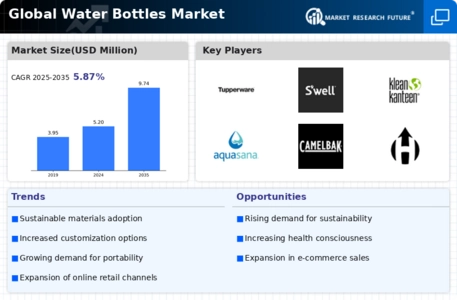
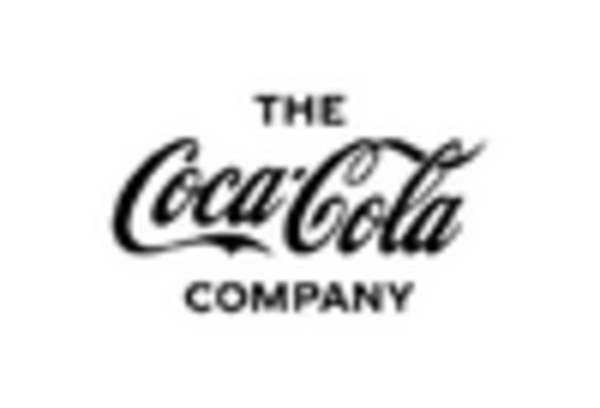
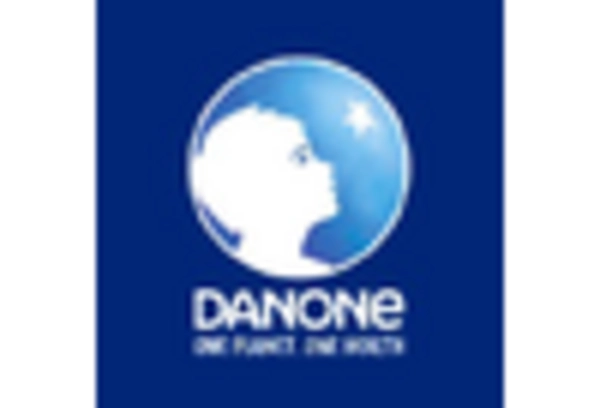
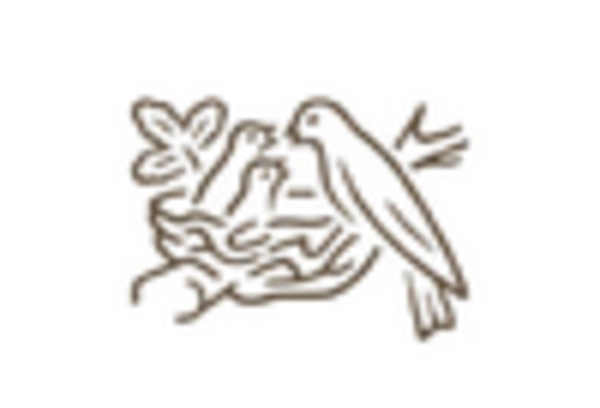
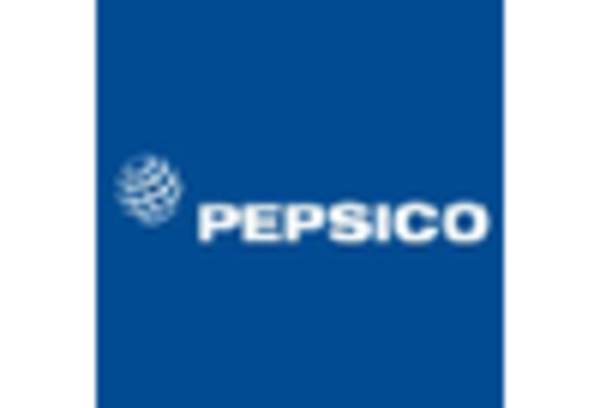
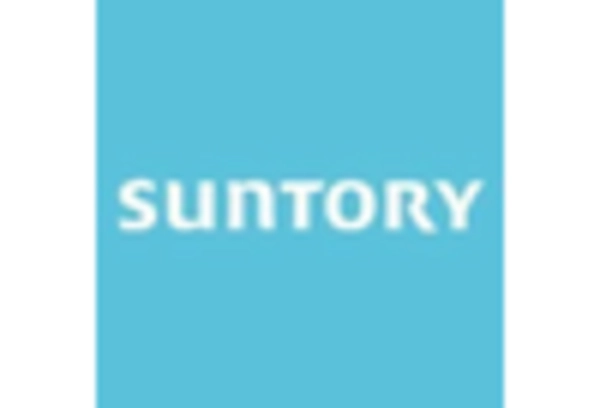
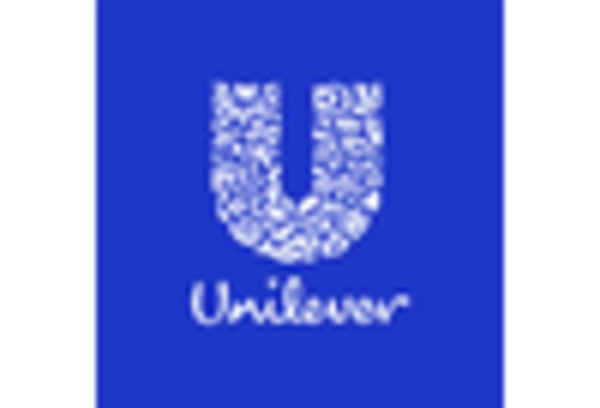









Leave a Comment